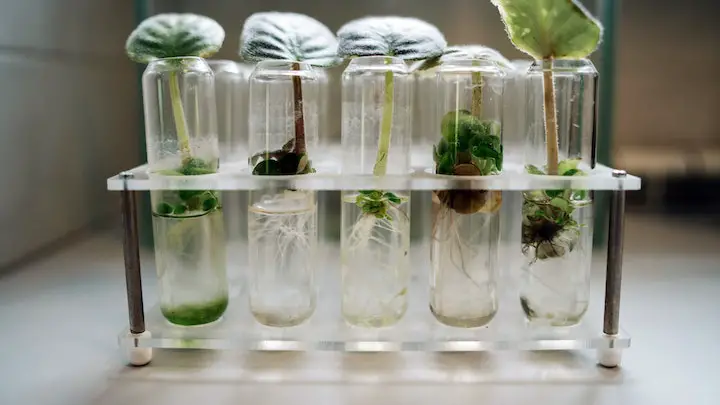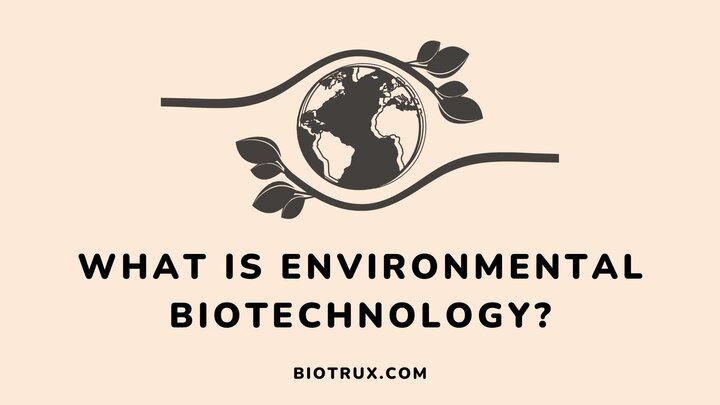Environmental biotechnology is a field of biotechnology interested in creating solutions and applications to protect, restore, and improve the quality of the environment. In other words, the field aims at detecting and recycling pollutants into valuable materials.
As a course, it is one of the fastest growing in the science fields, as it studies microorganisms’ genetics, physiology, and biochemistry to understand how they interact with the environment. It also stifles solid, liquid, and gaseous wastes to see how they can reduce environmental damage.
This guide breaks down the scope of environmental biotechnology, its applications, and what it takes to become an environmental biotechnologist.
Scopes of Environmental Biotechnology

As always, the scope of environmental biotechnology is to:
- Directly study the environment
- Execute research to create environmental solutions
- Channel inferences from these researches to other sectors
Applications of Environmental Biotechnology
Nowadays, daily life is a threat to the environment. Using chemicals, energy, and other non-renewable resources encourages the global population.
However, with environmental biotechnology, applications or solutions capable of mitigating these damages and improving the environment are achievable. Here is a breakdown of the various applications of environmental biotechnology:
1. Bioremediation
Bioremediation refers to using microorganisms to extract or remove and detoxify pollutants in water, soils, or sediments. This process is also known as bioremediation, restoration, and reclamation.
It leverages the fact that living organisms are susceptible to enzymatic attack by most organic chemicals. These enzymes are known as chemical catalysts and help eliminate harsh chemicals from leather during paper and textile processing.
The perfect environment can be created in situ or in specialized reactors (ex-situ). Most bioremediation employs naturally occurring microorganisms, but some feature genetically modified microorganisms.
Wastewater bioremediation
Water pollution is a major problem in most of the world due to industrialization. These industries generate massive wastes capable of contaminating water bodies, making irrigation and industrial needs necessary.
Sewage treatment, in this case, uses microorganisms to remove common pollutants such as heavy metals, nitrogen, and phosphorus compounds before being discharged into the sea or ocean. This can be done aerobically or anaerobically.
The 5 key stages are recognized in wastewater treatment:
- Preliminary treatment – removal of grit, heavy metals, and the following debris
- Primary treatment – removal of suspended particles
- Secondary treatment – bio-oxidization of organic materials via aerobic and anaerobic microorganisms
- Tertiary treatment – removal of specific pollutants such as ammonia and phosphate
- Sludge treatment – removal of solids
Soil and land bioremediation
When the population increases, food demand increases. As a result, people opt for deforestation, increasing the use of fertilizers and other forms of soil development. If these actions are not well regulated, they pollute the soil and harm plants and animals.
Several species of fungi can carry out soil and land bioremediation or treatment. These fungi include Lipomyces sp., Candida sp., Aspergillus niger, and Rhodotorula sp.
In situ treatment for land and oil involves adding nutrient solution, introducing ventilation, and microorganisms. This requires the stimulation of indigenous microbes (via nutrient solution or ventilation) to improve the degradation of organic pollutants.
Ex-situ soil and land treatment involve removing a soil sample and treating it separately as compost or in slurry bioreactors. This method works best to treat soil polluted by mineral oil or petroleum.
Air and waste gasses bioremediation
Human activities such as burning fossil fuels, coal, and oil to power industrial activities or vehicles are primarily responsible for air pollution. Other sources of air pollution include landfills and garbage from different households.
Bioreactors (including biofilters), scrubbers, membrane bioreactors, and biotrickling filters are required to treat biotechnology air pollution. The process begins with passing polluted air through the bioreactors, where volatile compounds undergo conversion into liquid.
In this state, microbes (bacteria, fungi, or protozoa) begin to grow and will help remove the volatile gas. Using a biofilter follows a similar process. In their case, there is no need for conversion, as their channels are ideally humid to support the growth of microbes.
2. Environmental detection and monitoring
Aside from treatment, or bioremediation, environmental biotechnology also helps detect and monitor pollution.
Instead of removing soil samples and sending them to laboratories for analysis, this area of specialization measures the level of on-site contamination and knows the consequences.
Environmental detection and monitoring rely on biosensors and immunoassays. Biosensors use microorganisms for detection. Conversely, immunoassays engage labeled antibodies (complex proteins) and enzymes to measure the degree of pollution.
3. Genetic engineering
Environmental biotechnology also relies on genetic engineering to improve most processes and applications. For example, microorganisms used in biosensors can be enhanced via DNA technology and gene combinations to improve the degradation of toxic substances.
How to Become an Environmental Biotechnologist
Becoming an environmental technologist requires a fair share of education and training, regardless of which area you wish to specialize in. For context, the minimum educational qualification you need is a bachelor’s degree. This can help you land entry-level biotech jobs.
However, with a master’s or a doctoral degree, you can choose an area of specialization and apply for jobs. Coursework may include microbial ecology, soil microbiology, ecosystem biology, and biogeochemistry.
What Does an Environmental Biotechnologist Do?
The primary responsibility of an environmental biotechnologist is to create a better and more sustainable environment for living and non-living things. Some of their processes include:
- Converting plants into biofuels
- Discovering or designing plants or microbes that can degrade or treat soil, sewage, or air contaminants.
- Creating plant-based bioplastics
- Using GIS (geographical information systems) to study contaminated areas and levels of pollution
- Recycle waste into biogas or other safer form of energy
- Create or determine the best remediation plan for various environment
FAQs
Is environmental biotechnology a promising career?
Environmental Biotechnology is a good career.
Many public and private institutions seek professionals with experience in improving the environment and its resources.
Where do environmental biotechnologists work?
Most environmental biotechnologists work in private companies. Common ones include environmental consulting and biofuel companies.
What do environmental biotechnologists do?
Environmental biotechnologists study environmental microbes and pollutants unique to them.
This helps them develop appropriate solutions for treatment and bioremediation.
Conclusion
Environmental biotechnology has one major goal: to improve the environment. When the environment is safe, humans and other space inhabitants will also be safe.
To do this, the field combines biology with engineering to develop processes that help with remediation using microorganisms, antibodies, and enzymes. These substances help break down pollutants into harmless compounds on-site or inside containers.
I hope you found this guide helpful. Also, you may wish to start your own after several years as an environmental biotechnologist. See my guide on how to start a biotech company to understand the necessary steps you need.
Thanks for reading.
